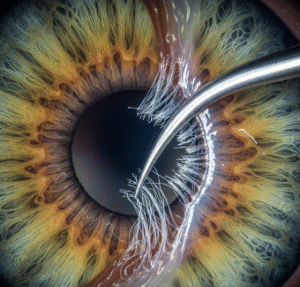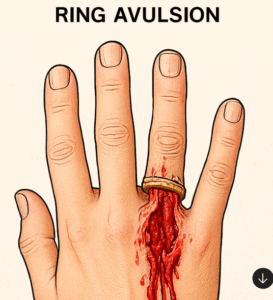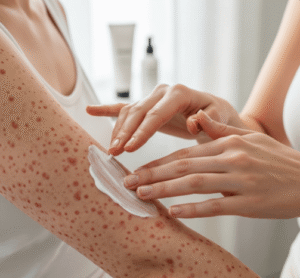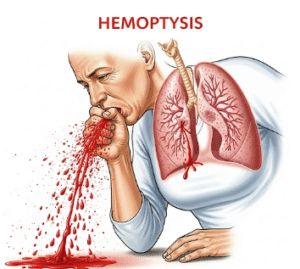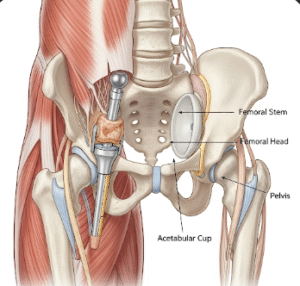Overview
White tongue is a condition where the tongue appears coated or discolored with a white layer, which can range from thin and patchy to thick and uniform. This common oral symptom often indicates oral hygiene issues, infections, or systemic conditions.
➤ White tongue may be temporary or chronic, depending on its cause.
➤ It is frequently associated with oral candidiasis (Candida albicans), dehydration, smoking, or certain medications.
➤ In Korea, dental clinics and medical centers provide diagnostic evaluation, treatment, and preventive advice for white tongue.
Key Facts
► Definition: Presence of a white coating on the tongue due to accumulation of debris, bacteria, fungi, or dead cells.
► Prevalence: Common among adults and children; more frequent in immunocompromised individuals.
► Associated symptoms: Bad breath, altered taste, dry mouth, mild discomfort.
► Risk factors: Poor oral hygiene, smoking, alcohol use, dry mouth, medications, infections, systemic diseases.
► Treatment in Korea: Includes oral hygiene optimization, antifungal therapy, hydration, and treatment of underlying conditions.
What Is White Tongue?
White tongue occurs when the papillae on the surface of the tongue become coated, often with microorganisms, food debris, or exfoliated cells.
➔ Infections such as oral thrush (candidiasis) are common causes.
➔ White tongue can also result from dry mouth, dehydration, smoking, or poor oral hygiene.
➔ Less commonly, it may indicate systemic diseases such as liver disorders, diabetes, or leukoplakia.
What Symptoms Are Related to White Tongue?
Symptoms may include:
→ White or yellowish coating on the tongue surface.
→ Bad breath (halitosis) due to bacterial overgrowth.
→ Altered taste or metallic taste in the mouth.
→ Dry mouth or difficulty swallowing in severe cases.
→ Red or inflamed tongue areas underneath the coating if infection is present.
→ Mild soreness or burning sensation in the oral cavity.
→ Coating may scrape off in cases of oral thrush, sometimes revealing a red surface.
Causes / Possible Causes of White Tongue
Infectious Causes
➤ Oral candidiasis (Candida albicans) – Common in infants, elderly, or immunocompromised individuals.
➤ Bacterial overgrowth – Poor oral hygiene can lead to thick coating.
➤ Viral infections – Certain viral illnesses may trigger transient white patches.
Lifestyle and Environmental Causes
➔ Dehydration or dry mouth – Reduces saliva, allowing buildup of debris.
➔ Smoking and alcohol consumption – Irritate tongue and reduce natural cleansing.
➔ Poor oral hygiene – Increases plaque and bacterial accumulation.
➔ Medications – Antibiotics, corticosteroids, or immunosuppressants may predispose to fungal overgrowth.
Systemic and Medical Causes
→ Leukoplakia – White patches linked to chronic irritation or tobacco use; may be precancerous.
→ Lichen planus – Autoimmune condition causing white streaks or patches.
→ Diabetes mellitus – High glucose can promote fungal overgrowth.
→ Liver or gastrointestinal disorders – May cause coated tongue due to systemic changes.
Other Contributing Factors
➤ Fever or illness – Temporary coating may appear during recovery.
➤ Stress or weakened immunity – Predisposes to oral infections.
When Should I See My Doctor?
Seek medical evaluation if:
➤ White coating persists for more than two weeks despite good oral hygiene.
➤ Associated with pain, swelling, bleeding, or difficulty swallowing.
➤ Occurs alongside fever, weight loss, or other systemic symptoms.
➤ There is suspected oral thrush, leukoplakia, or systemic disease.
➤ Early evaluation ensures appropriate treatment and exclusion of serious underlying conditions.
Care and Treatment
Lifestyle and Oral Hygiene Measures
► Brush tongue gently with a soft-bristled toothbrush or tongue scraper.
► Maintain good oral hygiene – brush teeth twice daily and floss regularly.
► Stay hydrated to prevent dry mouth.
► Limit smoking, alcohol, and sugary foods.
► Rinse mouth with antimicrobial mouthwash if recommended.
Medical Treatments
➔ Antifungal therapy – Topical or oral antifungals for oral thrush.
➔ Treat underlying causes – Address systemic conditions like diabetes or liver disorders.
➔ Discontinue or adjust medications if they contribute to fungal overgrowth.
➔ Prescription mouth rinses – May help reduce microbial buildup.
Procedural and Advanced Interventions
→ Oral swab and culture – To confirm fungal or bacterial infection.
→ Blood tests – For systemic diseases, if indicated.
→ Biopsy – In cases of persistent white patches suspicious for leukoplakia or lichen planus.
Treatment Options in Korea
Diagnosis in Korea
➤ Comprehensive oral examination by dentists or ENT specialists.
➤ Microbiological testing for Candida or bacterial pathogens.
➤ Laboratory tests for diabetes, liver function, or immune status.
➤ Imaging or biopsy if precancerous or suspicious lesions are suspected.
Non-Surgical Care
► Antifungal medications for oral thrush.
► Mouth rinses and improved oral hygiene guidance.
► Nutritional counseling to address deficiencies that may worsen white tongue.
Advanced Care
➔ Treatment of systemic diseases contributing to white tongue.
➔ Multidisciplinary care for persistent or complicated cases involving dentists, ENT specialists, and internists.
➔ Follow-up for recurrence prevention and monitoring of precancerous conditions.
Rehabilitation and Lifestyle Support
→ Patient education on long-term oral hygiene, hydration, and lifestyle changes.
→ Regular follow-up for immunocompromised or chronically ill patients.
→ Support for prevention of recurrent oral infections.
Korean clinics provide expert dental and medical care, combining diagnostic precision, antifungal therapy, and lifestyle guidance to manage white tongue effectively.



